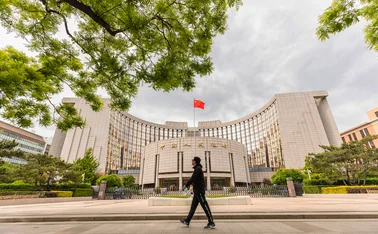
Payments provider of the year: Intellect Design Arena
The infrastructure behind the RBI's mass payments platform

The global payments landscape has changed dramatically during the past few years with the rise of digital payments and financial inclusion initiatives giving more people improved access to banking. At the same time, emerging markets have sought to improve and replace their current infrastructure to adapt to the new wave of payment opportunities available to consumers.
India, one of the fastest-growing and largest emerging markets, is a case in point. In 2015, digital payments surpassed cash payments for the first time, according to The Economic Times, with digital transactions accounting for $1.43 trillion, compared with $1.33 trillion transferred via cash payments.
A financial inclusion drive initiated by the government of prime minister Narendra Modi has also significantly increased the number of government payments being processed by the Reserve Bank of India (RBI), increasing pressure on the central bank to improve its system. Intellect Design Arena has been well placed to help deal with these challenges, delivering upgrades to the RBI's payments system to allow individual state governments to go 'fully digital' with their social payment plans.
Traditionally, government payments were paid through designated agency banks that processed the payments and sent requests to the end beneficiary through a domestic payment system. Agency banks charged the RBI commission for processing such transactions - for example, pension payments are typically charged at Rs65 ($1). With a population of more than 1.2 billion people and in excess of 248 million households, these sorts of transaction fees can mount up.
Intellect first started working with the RBI in 2011 to implement a core banking system based on its 'quantum central banking solutions' (QCBS) technology. This integrated the government and domestic payment systems already operational in the central bank – the bank subsequently dubbed this system 'e-Kuber'. The new system, which went live in 2014, has been adapted and improved to accommodate the large amount of government payments now being directed through the central bank.
RBI scales up
"The payment platform enables the RBI as a service provider to the governments (both central and state) to handle a huge number of retail payments such as salary, pension, vendor payments, various schemes, scholarships," says Jaideep Billa, chief executive of Intellect global consumer banking.
Originally, the payment part of the project was meant to handle the payments of just two to three states. However, due to the success of the system, the RBI decided to roll out the initiative nationally. Since then, Intellect has worked around the clock to upscale the current infrastructure - new additions such as the advanced Intellect 'quantum message hub' and 'service enablement layer' have been introduced to enhance the system. "These features are all new," Billa says.
'Payments middleware', the name of the new platform, "will allow the bank to observe the money travelling through the commercial banks to the respective account", Billa says. The RBI has seen the volume of payments increase since implementation and is expected to be processing around 10–15 million payments per month by the end of 2016 – although Billa claims the RBI's core banking system could handle up to 100 million transactions per day.
It has been optimised into the ISO 20022 format consisting of file validation, message content validation (digital signature and settlement confirmation) and individual message process, explains Sriram Vaideeswaran, Intellect global consumer banking's chief operating officer.
The payment system is currently operating at much lower levels than its ultimate capacity, but the numbers are still large. Currently four states are processing payments through the system: West Bengal, Karnataka, Kerala and Odisha. Seven other states are processing consolidated receipts through the system. "During the last week of the month, when the majority of payments come through, we will be processing between 2-2.5 million payments," said Kalyan Chakravarthy, assistant general manager of the core banking system at the RBI, speaking in November 2015. "We have a timeline to try and integrate half the government states by mid-2016. In the next month we are hoping to integrate a further four to five states, which will increase the volume of payments to five million."
Looking forward, Chakravarthy says: "We now have a mandate to process 20-30 million federal payments at full capacity. The current infrastructure is not yet sustainable for that amount, but we are getting there." The bank is in advanced talks with about five states for their integration into the system and hope to have them onboard within the next six months.
The enhanced infrastructure fully supports a configurable messaging layer with advanced provisions for routing, settlement and message generation. Once the payment is processed, a scroll is generated, grouped by government account and sent to the respective government entity. The messaging layer has also been applied to domestic payment systems.
For states not currently integrated into the system, Intellect has met the agency banks in the middle, with the receipts collected by the banks being processed by QCBS and settled against the respective commercial bank account and government account. A scroll is then generated and sent to the respective government entity.
Time is of the essence
Currently the window for integrating states into the system is rather narrow but the RBI praised Intellect for its enthusiasm to deal with the tight deadlines. "Sometimes we only have a few days to integrate state governments," says Chakravarthy. "Intellect is always up to speed and prepared to meet the needs of the bank. They always meet the deadline."
As the system is gradually enhanced to meet the growing amount of payments passing through it, Intellect has been on hand to help scale up the infrastructure and add the relevant components. Chakravarthy emphasised the system is constantly adding new layers. "Intellect helps scalability happen in an instant," he said.
The work with the RBI has created a relationship built on trust in addition to Intellect being recognised for producing good quality systems. "I have worked with Intellect for a long time," Chakravarthy says. "They provided the core banking system, depository system and the treasury management system. The dialogue between us and them is always open."
There is currently no set end-date for the project's conclusion as it is optional for states to decide whether they want to use the platform operated by the central bank. However, Chakravarthy remains optimistic that more states will want to be integrated when they see the system's efficiency: "There is no lag time. The system operates with real-time payments. Before, it used to take half-a-day to process this type of payment. Now it is instantaneous."
The Central Banking awards were written by Christopher Jeffery, Tristan Carlyle, Daniel Hinge, Arvid Ahlund, Dan Hardie and Rachael King.
Only users who have a paid subscription or are part of a corporate subscription are able to print or copy content.
To access these options, along with all other subscription benefits, please contact info@centralbanking.com or view our subscription options here: http://subscriptions.centralbanking.com/subscribe
You are currently unable to print this content. Please contact info@centralbanking.com to find out more.
You are currently unable to copy this content. Please contact info@centralbanking.com to find out more.
Copyright Infopro Digital Limited. All rights reserved.
As outlined in our terms and conditions, https://www.infopro-digital.com/terms-and-conditions/subscriptions/ (point 2.4), printing is limited to a single copy.
If you would like to purchase additional rights please email info@centralbanking.com
Copyright Infopro Digital Limited. All rights reserved.
You may share this content using our article tools. As outlined in our terms and conditions, https://www.infopro-digital.com/terms-and-conditions/subscriptions/ (clause 2.4), an Authorised User may only make one copy of the materials for their own personal use. You must also comply with the restrictions in clause 2.5.
If you would like to purchase additional rights please email info@centralbanking.com





